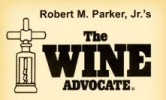Gregory Hecht and François Bannier’s – for more about whose remarkable partnership, consult my account in issue 183 – are living up to the challenge they set themselves, namely to render, as negociants of a unique hands-on labor-intensity, wines that can stand comparison with those of each respective appellations top estates.
They continue to focus on the same four appellations (for an account of their Cotes du Roussillon cuvees as well as an inaugural Maury, see the report on Roussillon that appears in this issue), although several other projects have emerged, including an Appellation Languedoc bottling that serves not only as an intro-level wine but as an outlet for fruit that does not make the cut for their four other dry red wines.
Remarkably, U.S. retail prices for these extraordinary values have remained virtually unchanged since they first appeared in our markets – except for the couple of instances where they have been lowered! (I won’t repeatedly note and literally underline references to value in the notes that follow; if you compare them with my scores and the prevailing prices, you ought hardly to need help drawing the appropriate consequences, however jaw-dropping!)
“Selection was an interesting but especially tough job in 2008,” notes Gregory Hecht, “because there was a lot of mildew pressure for growers to deal with in a relatively cool year with only two real heat spikes.” The results illustrate precisely the distinctive virtues of this vintage. “Two thousand nine is obvious in its generosity and power,” opines Hecht, “whereas 2010 is more nicely-dressed and elegant, with a crisp edge.”
The down-side of the enormously promising and already irresistible youngest offspring at this address is that low yields – when combined with Hecht and Bannier’s stringent principles of selection and grower-loyalty – meant that the total volume of wine available under their label had to suffer a significant dip.
